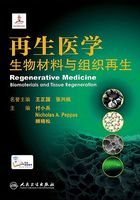
Abstract
One of the major challenges for tissue repair and regeneration is lack of suitable biomaterials.Silk is a special biomaterial that was originally from China.The major component of silk,silk fibroin,has now been widely studied and utilized;while the other major component of silk,sericin,was traditionally considered as a waste product from silk industry and its value was underestimated and unexplored until Wang’s team studied and reported its value for tissue regeneration.
Prof.Wang’s research team is currently one of the leading research groups on silk sericin.They successfully extracted pure sericin with biological activities for the first time and characterized and revealed its critical biological properties,such as biocompatibility,photo-luminescence,low immunogenicity and superior gelation properties.Their findings not only provided a new type of biomaterial for tissue regeneration but also provided important rationale and solid foundation for sericin’s future application.Based on its unique properties,Wang’s team successfully developed new types of sericin biomaterials and utilized them for various types of tissue repair.A number of multi-functional sericin biomaterials such as scaffolds,nerve guidance channels and drug delivery vehicles were developed and used forvarious types of injury treatments such central and peripheral nerve regeneration,cardiac tissue repair as well as cartilage and skin repair.etc and have achieved satisfactory therapeutic outcomes in preclinical animal models.Through these work,they developed a new type of biomaterial and opened up possible new applications for sericin biomaterial for wound repair and regeneration,which may lead to future clinical translation.
Together,this work suggests sericin is an ancient material with emerging value in tissue engineering.And Wang’s team aim to transform sericin,this silk by-products into high-tech tissueengineering products for wound repair and tissue regeneration.Meanwhile,economical and environmental benefits can be achieved when sericin is recycled and effectively utilized.The successful translation of the relevant technologies may benefit patients and contribute to the modern silk industry in the near future.